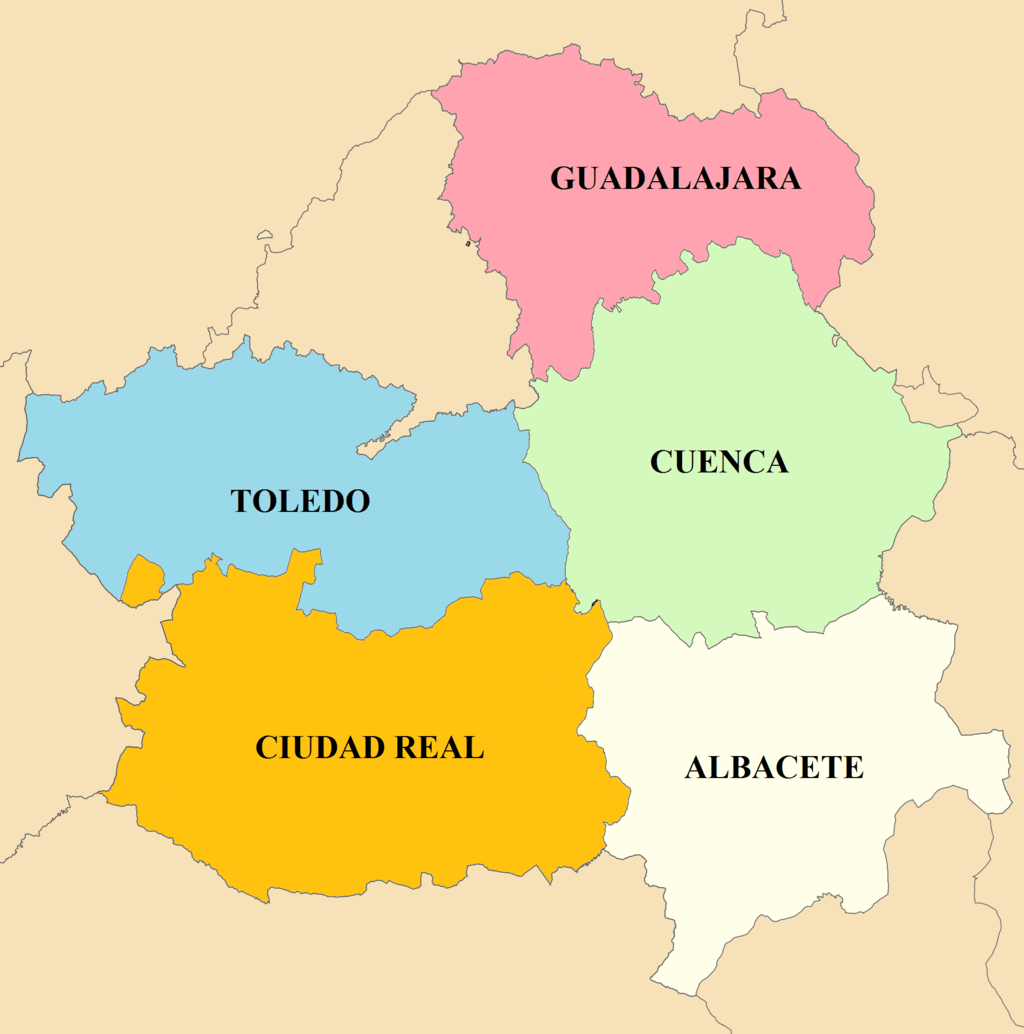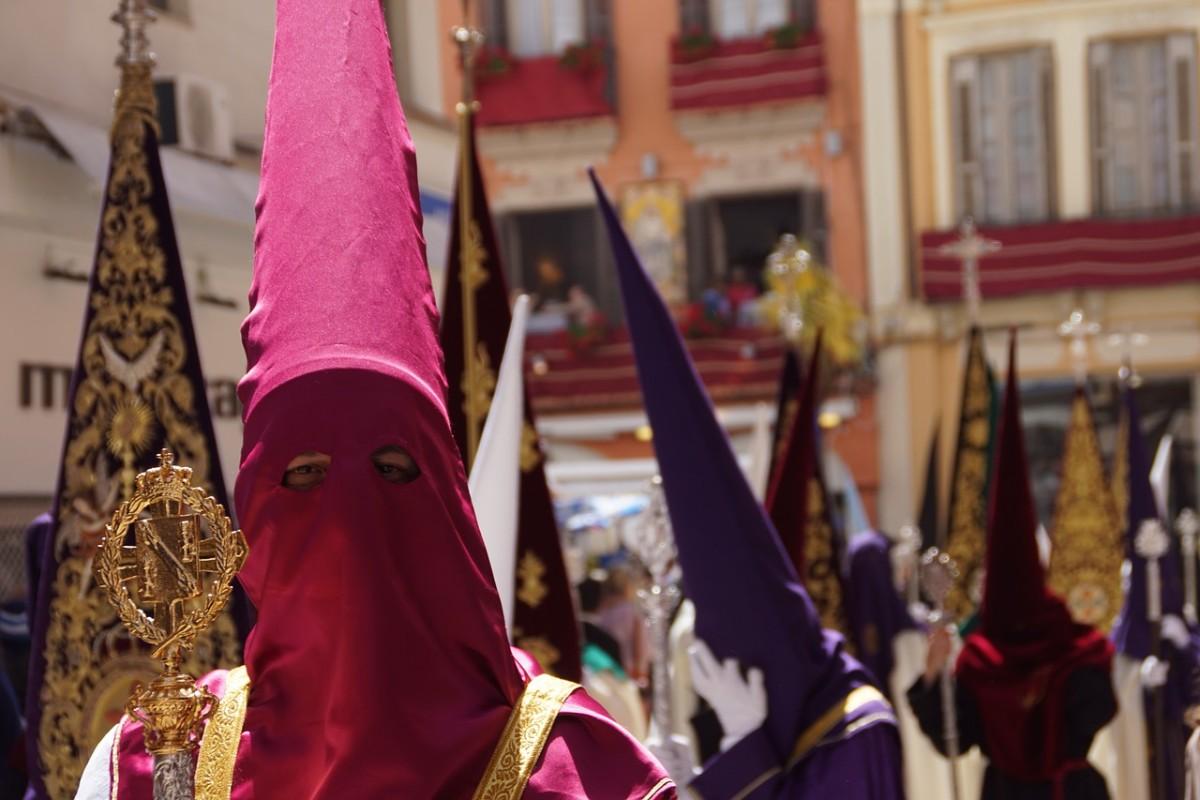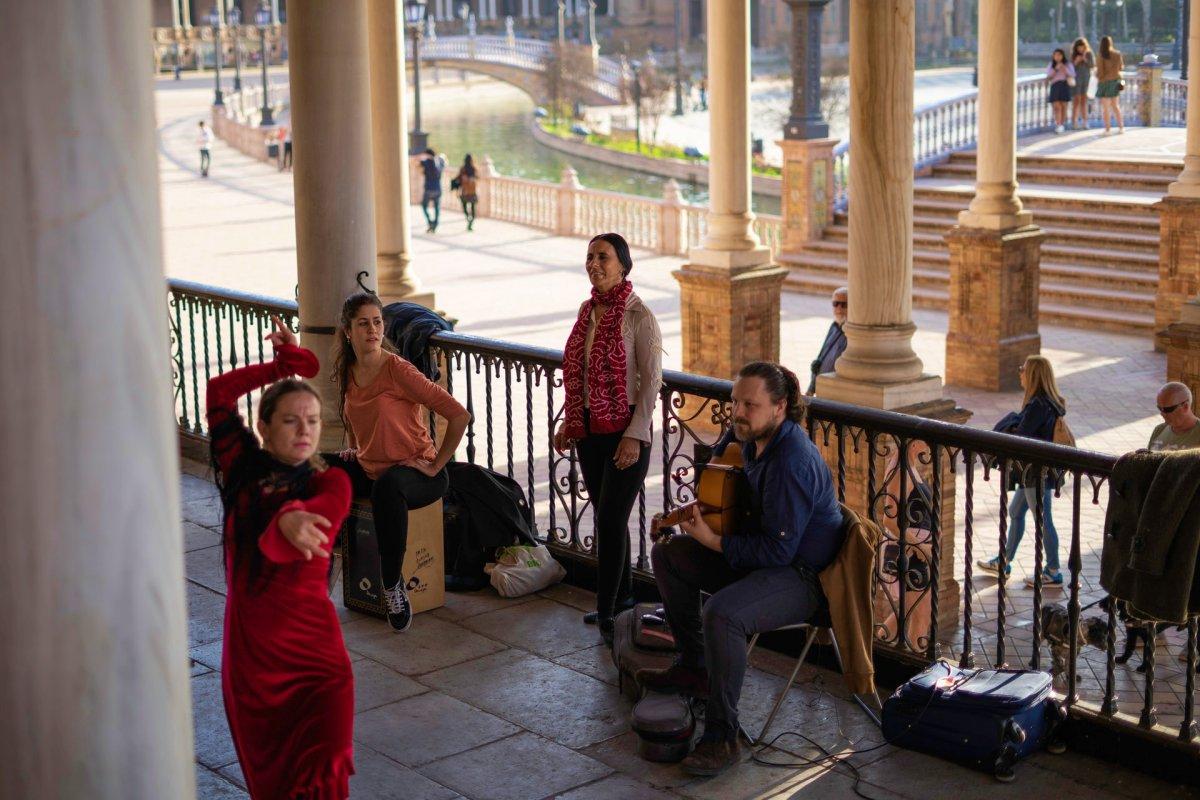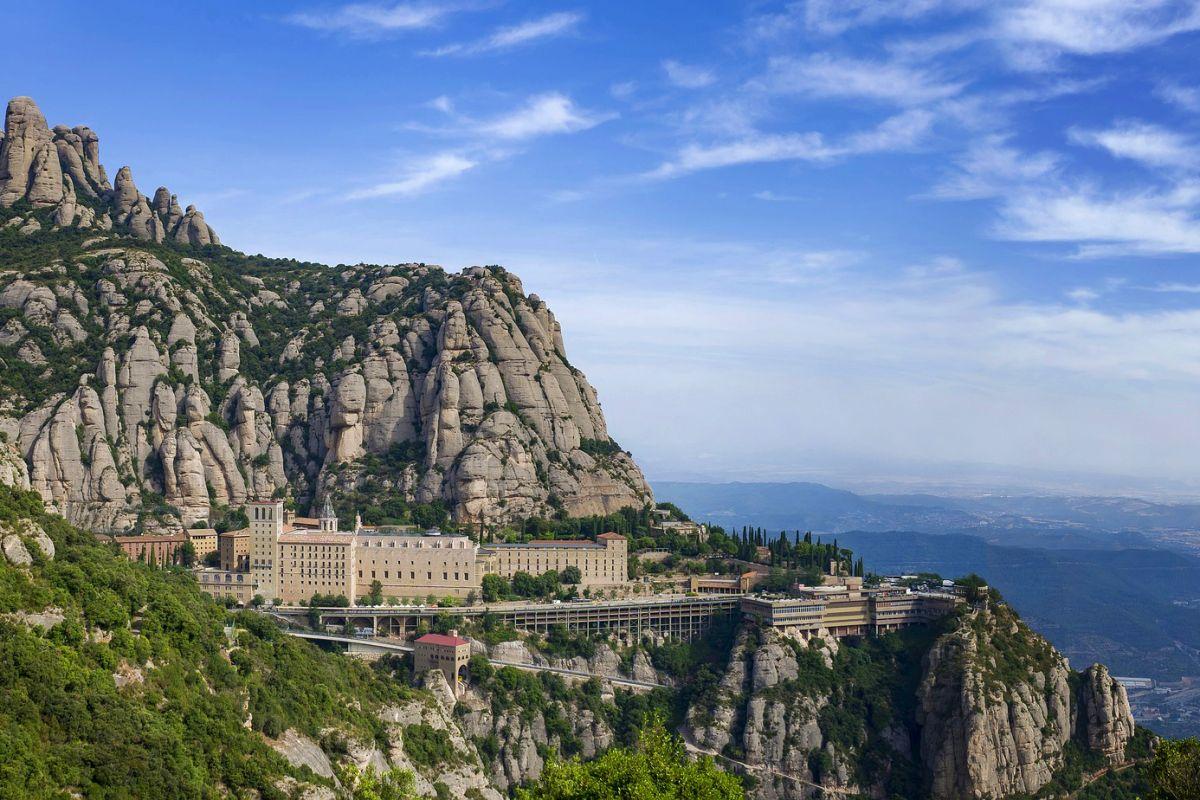15 Interesting Castilla La Mancha Facts (100% true)
Did you know that Manchego cheese comes from Castilla La Mancha in Spain? Or that famous filmmaker Pedro Almodóvar comes from this region?
Discover more about this wonderful part of the world through these 15 amazing Castilla La Mancha facts!
Facts on Castilla La Mancha to Learn All About It
Ready to learn all about Castilla La Mancha?
Facts are one of the best ways to learn more about something, and I personally love to read them! I’ve put together for you quite a bit of facts on Castilla La Mancha; I’ve split them in 2 categories:
- The best Castilla La Mancha facts
- General facts of Castilla La Mancha
Let’s dive in straight away with our first category!
The Best Castilla La Mancha Facts
The first part of this list is made of general facts about Castilla La Mancha, mostly regarding history but also geography and economy:
1. Castilla La Mancha is the third largest region in Spain
It is part of the 17 autonomous communities of Spain. With an area of 79,462 km² / 30,681 sq mi, it is the third largest of them, after Castile and León and Andalusia. Castilla La Mancha is located in the center of Spain, right next to Madrid, and was created in 1982.
Though it is so large, it is largely unpopulated because there is so much countryside, and it is actually one of the most sparsely populated regions of the whole country.
2. The capital of Castilla La Mancha is Toledo
Toledo is a city full of history. In fact, its heritage is so large that it was declared one of UNESCO World Heritage sites in 1986.
Let’s quickly summarize the past of Toledo: it was first ruled by Romans, then Visigoths, then the Emirate of Cordoba, then Christian forces. It has more than 2,000 years of history and you can find some very diverse masterpieces between its walls, coming from both different civilizations and different religions.
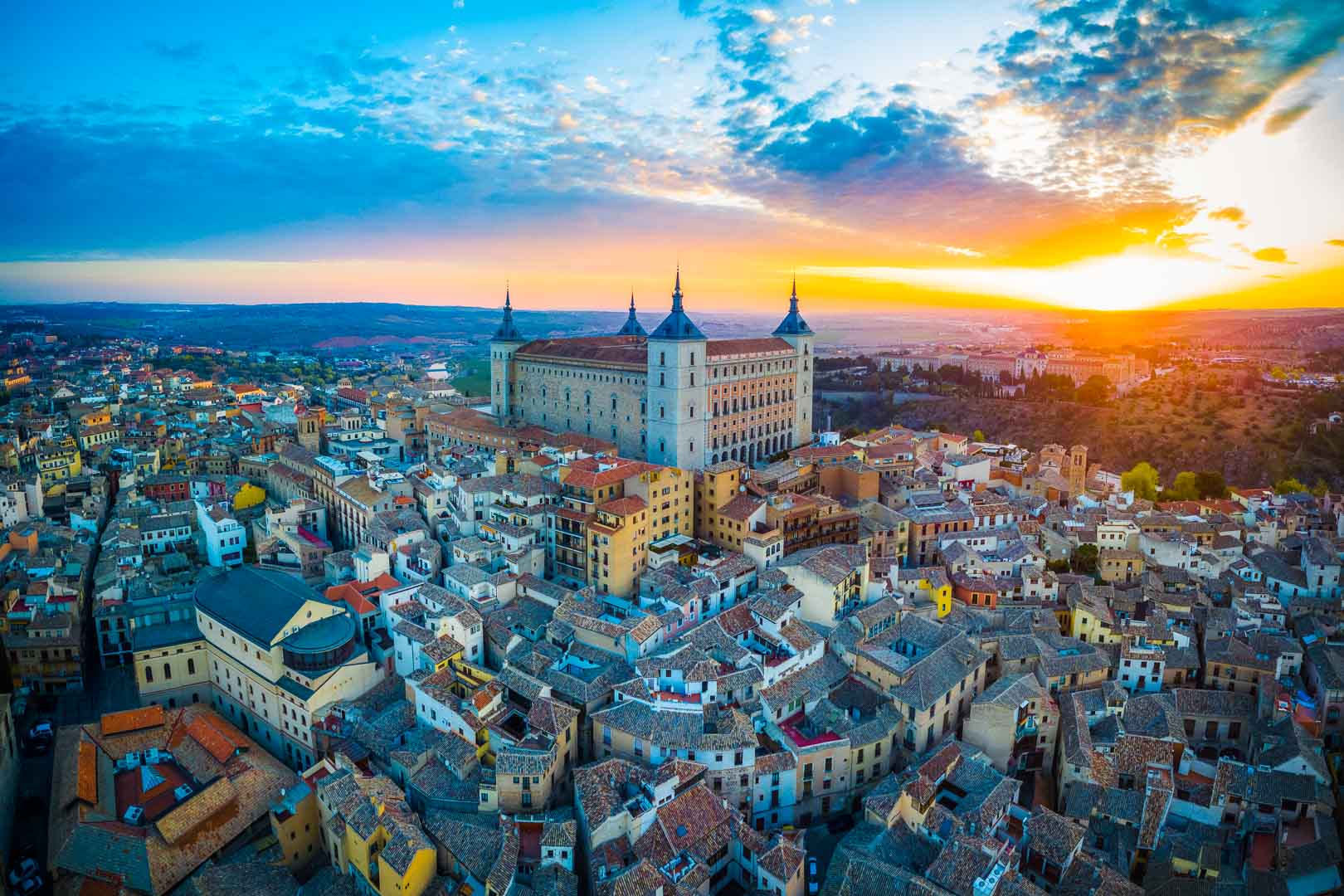
3. Castilla La Mancha used to be the most important region in Castile
With its rich heritage and history, you already know how important Toledo is to Castilla La Mancha. Well, actually, it used to be very important for the whole country… because Toledo was the capital of Castile, and then of the Spanish Empire.
Until 1560, when Philip II of Spain moved the court to Madrid, not that far away. Today, since it hosts the Parliament of Castilla La Mancha as well as the presidency of the regional government, it is de facto its capital.
4. The most famous sight of the region appeared in the epic novel “Don Quixote”
“The Ingenious Gentleman Don Quixote of La Mancha”, more commonly shortened to “Don Quixote”, is a Spanish novel by Miguel de Cervantes. Over time, it has become very famous, and is even considered one of the founding works of Western literature.
During his adventures, Don Quixote believes the famous white windmills of Consuegra to be angry giants. Those lined up windmills are actually some of the most famous landscapes in Spain, and each of them has its own name.
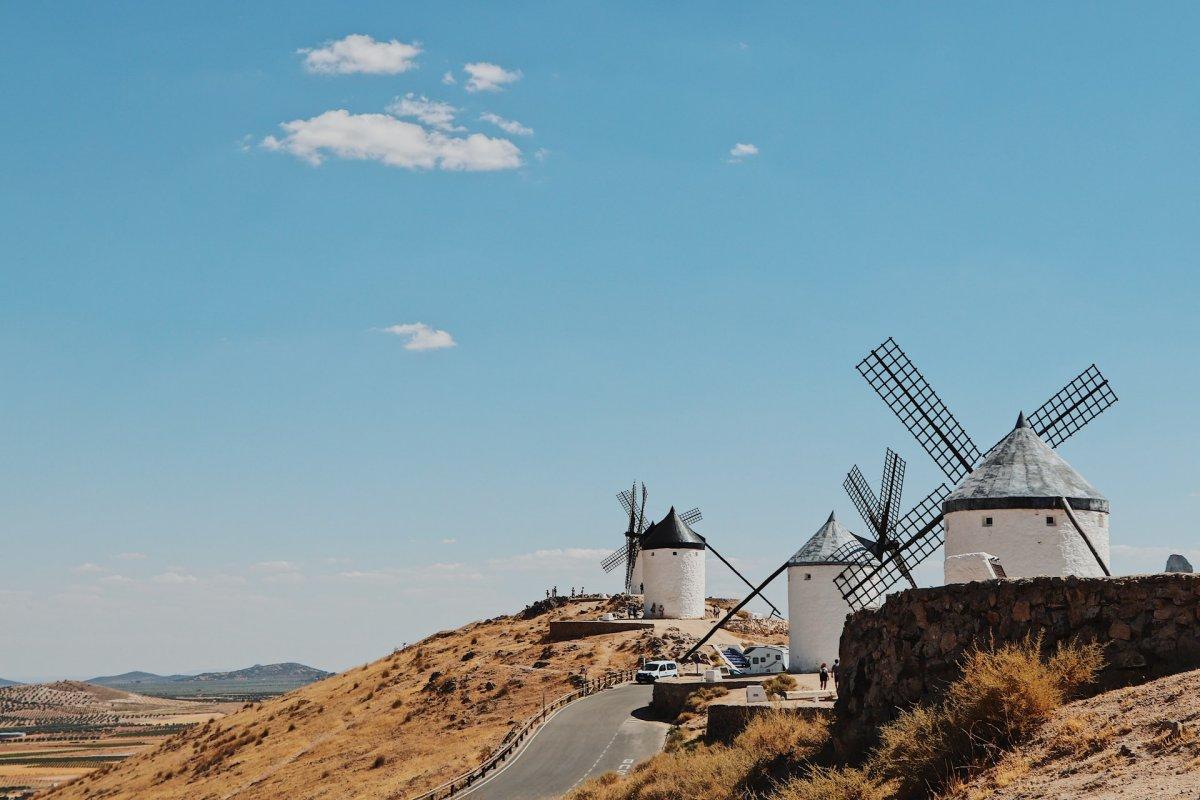
5. Castilla La Mancha is reputed for its characteristic Manchego cheese
The unique Manchego cheese is characteristic of the region of Castilla La Mancha. It is a sheep’s milk cheese that is both firm and creamy. There are different types of Manchego cheese, the “freso” (aged two weeks) and the “viejo” (aged a year), giving it different colors (from ivory to brown).
Its history goes back to Roman times, and it is today the most reputed Spanish cheese abroad.
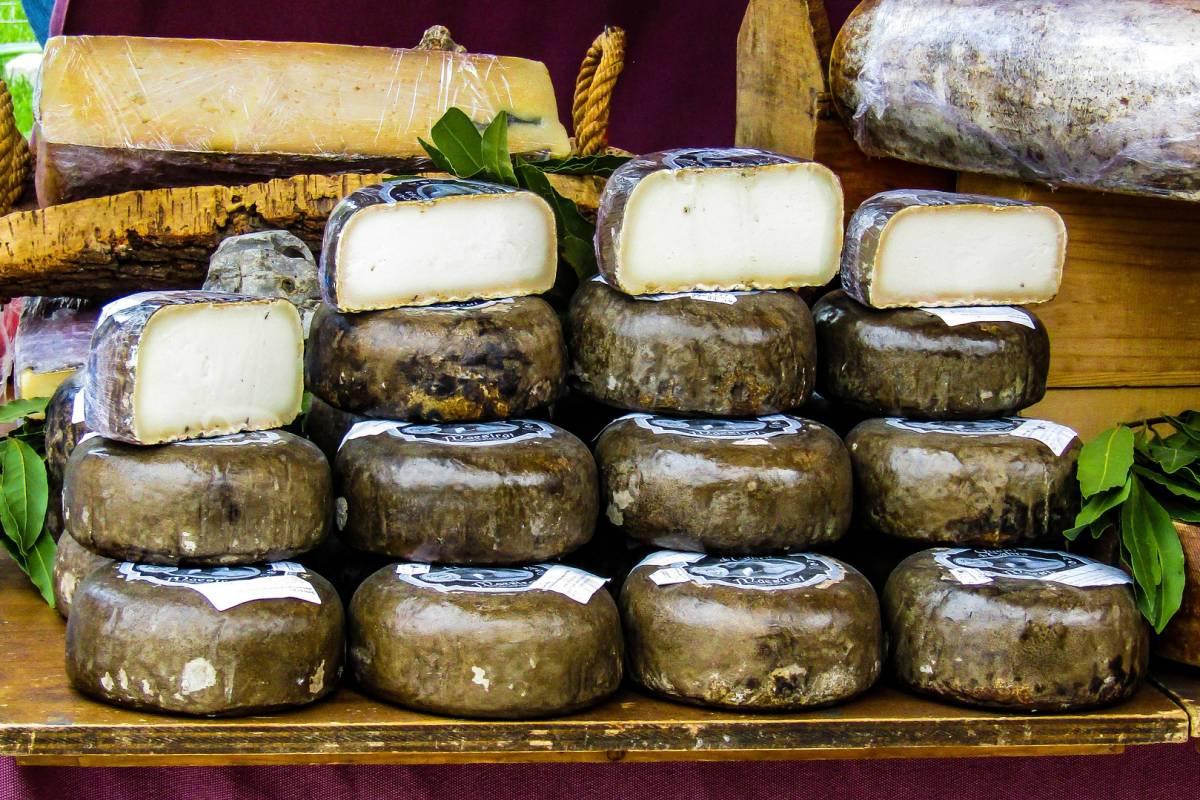
Manchego
6. There is a lot of wine production in Castilla La Mancha
Wine is an important part of Spain’s production. In fact, Spain is the third wine producer in the world! The best known ones are Riojas, Cava, Sherry and Godello. From reds to whites, you can find your best fit in Spain.
In Castilla La Mancha, most of the production is cheap table wine, but there are still some high-standard vineyards, like “La Mancha” or “Manchuela”.
7. There is more than just cheese and wine in Castilla La Mancha’s cuisine
French people would disagree, but you need more than just cheese and wine for a complete and renowned gastronomy.
In Castilla La Mancha, cuisine is sober and rustic, on par with the region’s atmosphere. The most famous dishes are “asadillo de la Mancha” (chopped red peppers), “cocido madrileño” (varied stew) and “migas de pastor” (sautéed leftover bread).

Javier Lastras / CC BY / Cocido Madrileño
8. Several famous people were born in Castilla La Mancha
I know famous people are a topic that lots of people love, so let’s talk a bit about the ones from Castilla La Mancha.
Fernando de Rojas was a dramatist born in La Puebla de Montalbán. El Greco was a Greek artist of the Spanish Renaissance, who lived in Toledo from 1577 to 1614. Finally, Pedro Almodóvar, the famous filmmaker, was born in Calzada de Calatrava.
9. Artisans create some fine pieces of work, like the Swords of Toledo
Historically, Toledo steel is known as unusually hard. Because of that, Toledo became a traditional steel-working hub and a traditional sword-making center since 500 BC. It even came to the attention of Rome when Hannibal used it in the Punic Wars. Toledo steel became the standard source for Roman legions.
Another piece of art are the knives of Albacete, a very reputed place for knife manufacturers.
10. Castilla La Mancha takes advantage of its low population density
You already know, there is a lot of Castilla La Mancha that is empty in terms of population. It is so sparsely inhabited that agriculture has taken advantage of it.
With its elevated plains and mountains, and dry continental climate, the summers are hot and the winters are cold. Both agriculture (mostly grapes, wheat and olives) and animal husbandry (sheeps, pigs and goats) are extended.
11. Castilla La Mancha is divided into 5 provinces, all named after their capital cities
Spain is divided into 17 autonomous communities, and each of them is again divided in several provinces. In Castilla La Mancha, there are 5 of them.
The first and most famous one is Toledo. Cuenca is also very well known, as well as Albacete (which you’ve already heard from fact #9). Finally, Ciudad Real and Guadalajara are the last two.
12. Nine civilizations have lived in Castilla La Mancha
Castilla La Mancha is definitely a very special region with tons of history and culture, but that goes even further than you think.
Not less than nine civilizations used to live there! Chronologically: Folkloric Celts, Carthaginians, Romans, Alanos, Visigoths, Moors, Castellans and Spaniards. Its story ranges from 220 BC to the current day.
13. There is a volcano in Castilla La Mancha
Volcanoes are historically terrifying, especially when you think of the story of Pompeii. They are located at the junction of tectonic plates. However, not all of them are active, and lots of them are also underwater.
In Castilla La Mancha, you can visit a volcano, called “Cerro Gordo” in Ciudad Real. There is even a museum explaining the whole story of those monsters of nature.
14. Three of the most important Spanish rivers rise in Castilla La Mancha
The five most important rivers in Spain are “River Tajo”, “River Ebro”, “River Duero” and “River Guadiana”.
Three of the top ten longest rivers rise in Castilla La Mancha: “River Tajo”, “River Júcar” and “River Segura”. Both el Júcar and el Segura flow into the Mediterranean Sea at the end of their course.
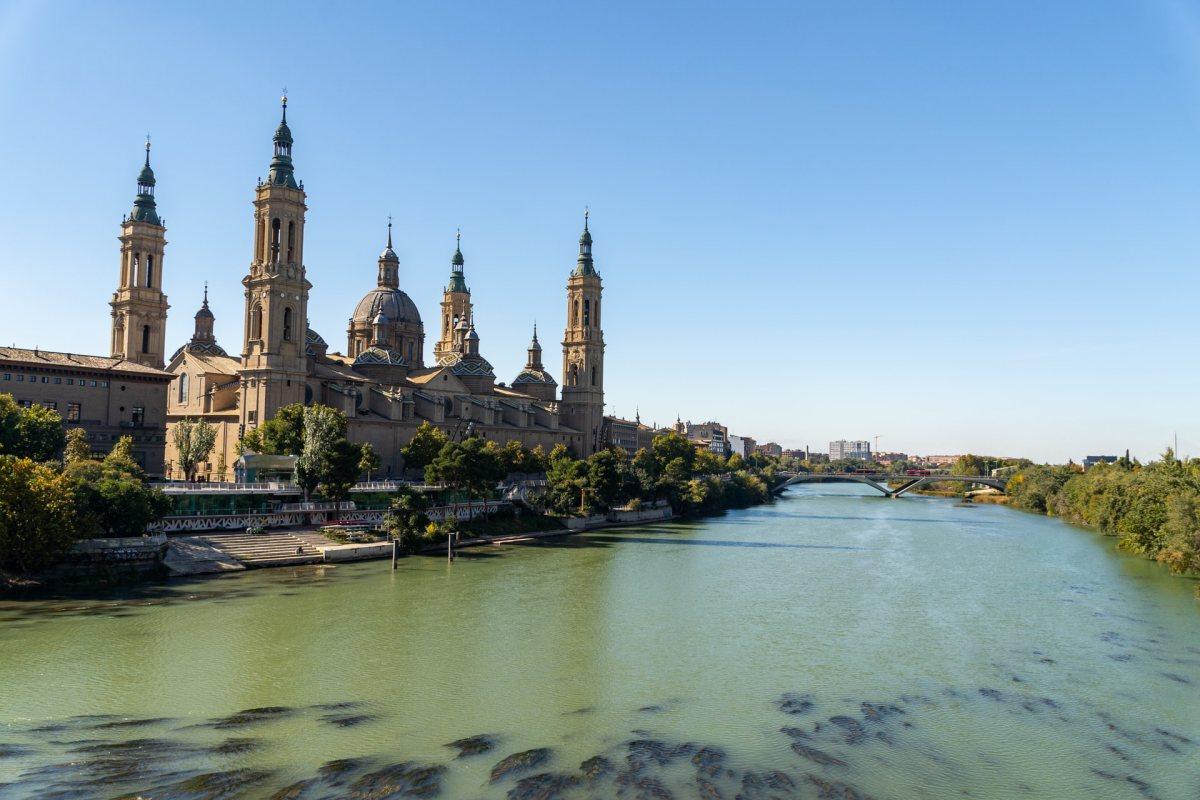
Ebro River
15. Some of the most interesting museums in Spain are in Castilla La Mancha
You probably know some of the famous museums of Madrid or Barcelona, but Castilla La Mancha also has its own majestic ones.
The most famous ones are the Army Museum and the El Greco Museum in Toledo, the Ruiz de la Luna Ceramic Museum in Talavera de la Reina, the oldest provincial museum in Spain located in Guadalajara and finally the Paleontological Museum of Castilla La Mancha, in Cuenca.
So there you have them, the 15 interesting Castilla La Mancha Spain facts. I hope you enjoyed them! If you want to learn more about the region and even about Spain, feel free to keep reading for more general information:
General Facts of Castilla La Mancha
You’ll find below a few general facts of Castilla La Mancha, to learn more about this Spanish region:
- Name: Castilla La Mancha
- Land area: 79,463 km² / 30,681 sq mi
- Population: 2 million
- Name of inhabitants: Castelannomanchego/a
- Website: Castilla La Mancha
Castilla La Mancha Flag
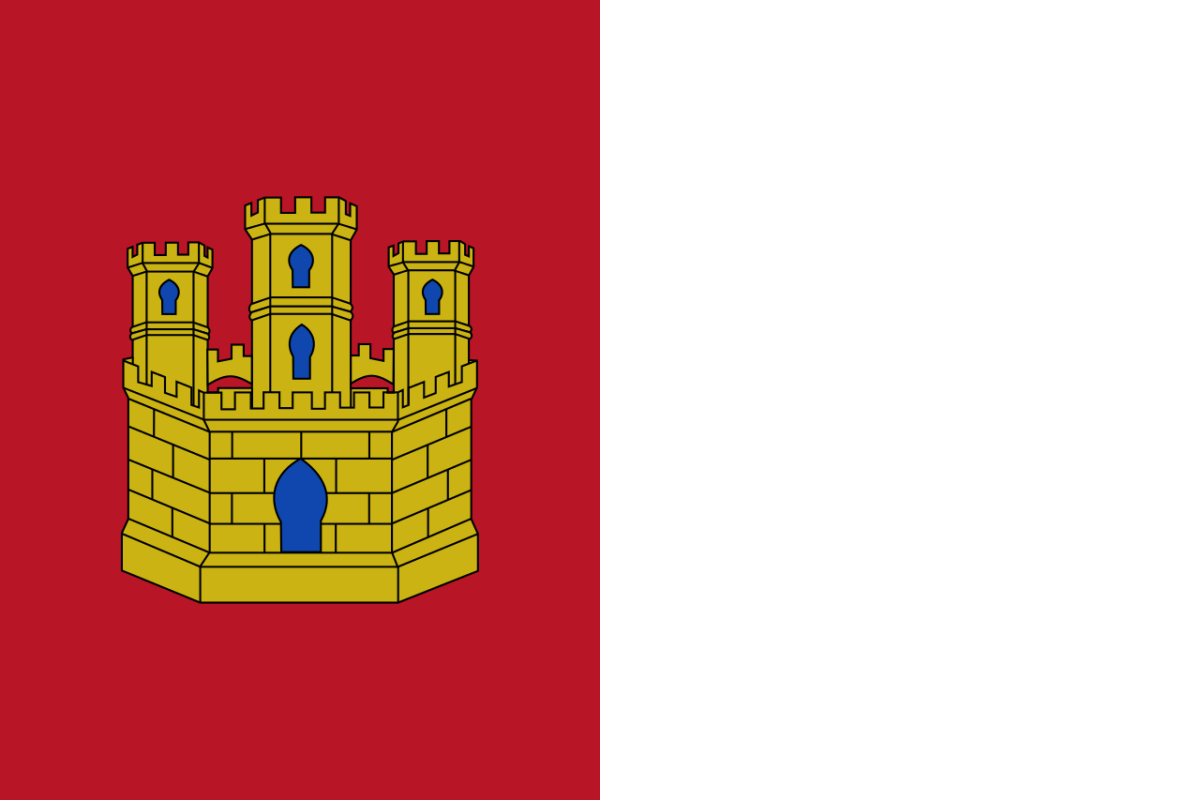
More Facts!
Do you want even more facts about Spain?
Well, I have more facts about Spain, I’m sure you’ll love reading them!
Here’s the main guide of the best Spain facts 👉 All the Facts about Spain
Check out these facts by city/region:
- Facts about Madrid
- Facts about Catalonia
- Facts about Bilbao
- Facts about Barcelona
- Facts about Seville
- Facts about Malaga
- Facts about Granada
- Facts about Valencia
Or these Spain facts by topic:
- Facts about Christmas in Spain
- Facts about la Semana Santa in Spain
- Facts about religion in Spain
- Facts about Spanish food
- Facts about the Spanish language
- Facts about bullfighting in Spain
- Facts about schools in Spain
- Facts about sports in Spain
- Facts about music in Spain
Or click here to see ALL the facts up on the blog! Spoiler alert: there’s A LOT of them.
The Full List of 15 Castilla La Mancha Facts
- Castilla La Mancha is the third largest region in Spain
- The capital of Castilla La Mancha is Toledo
- Castilla La Mancha used to be the most important region in Castile
- The most famous sight of the region appeared in the epic novel “Don Quixote”
- Castilla La Mancha is reputed for its characteristic Manchego cheese
- There is a lot of wine production in Castilla La Mancha
- There is more than just cheese and wine in Castilla La Mancha’s cuisine
- Several famous people were born in Castilla La Mancha
- Artisans create some fine pieces of work, like the Swords of Toledo
- Castilla La Mancha takes advantage of its low population density
- Castilla La Mancha is divided into 5 provinces, all named after their capital cities
- Nine civilizations have lived in Castilla La Mancha
- There is a volcano in Castilla La Mancha
- Three of the most important Spanish rivers rise in Castilla La Mancha
- Some of the most interesting museums in Spain are in Castilla La Mancha
Share the knowledge! Click on the buttons below to share these facts with your friends, and help them learn more about the world 🙂
